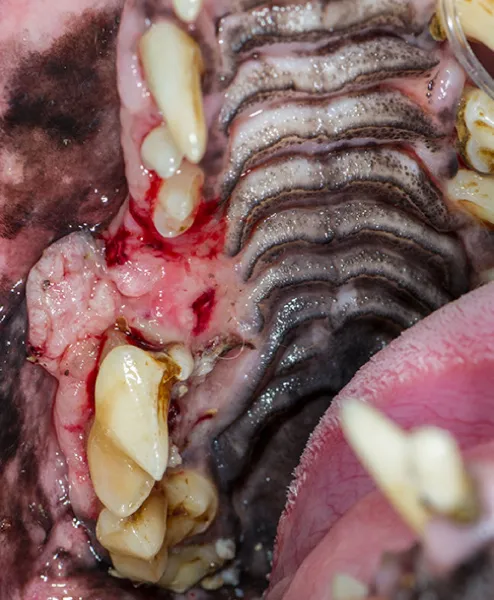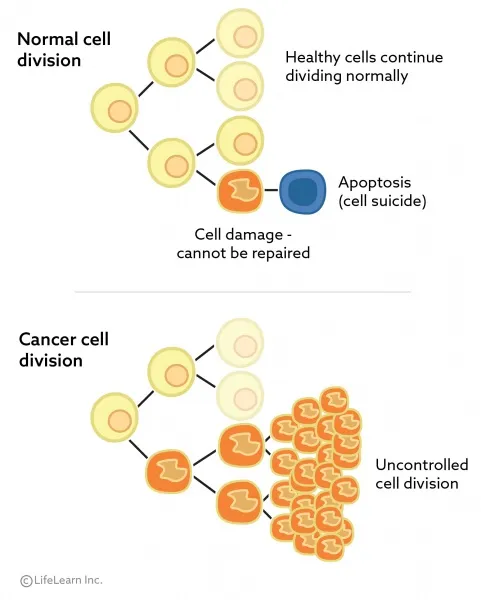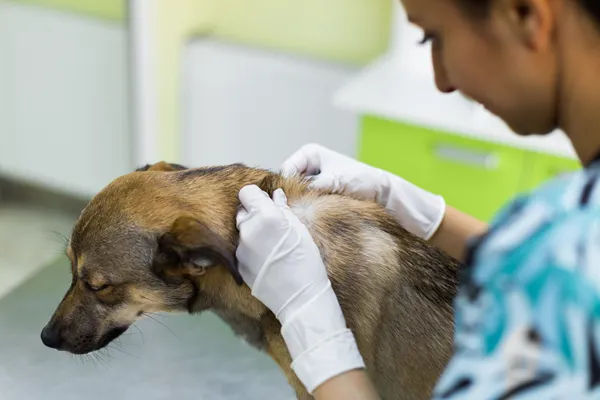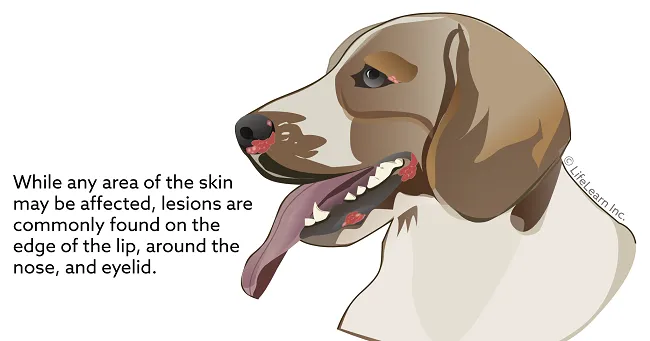Oral Tumors – Squamous Cell Carcinoma

Oral squamous cell carcinomas (SCC) are the most common oral tumor in cats, and second most common in dogs. These tumors are locally aggressive, with a possibility to metastasize. Regardless of the location of SCC, surgery is the typically the standard treatment. Radiation therapy may be recommended following surgery or as a primary treatment for palliative care. Staging is recommended for all cases. If metastasis is present chemotherapy is often pursued.
Oral Tumors – Peripheral Odontogenic Fibromas

Odontogenic fibromas, sometimes previously referred to as an epulis, are benign tumors of the mouth often at the front of the upper jaw. These may be locally invasive and may cause some oral pain. Surgery is the recommended course of action to treat this condition.
Neuroendocrine Tumors

Neuroendocrine tumors are a group of tumors that develop from the cells of the neuroendocrine system, and include insulinomas, gastrinomas, glucagonomas, carcinoids, medullary thyroid carcinomas, small-cell lung carcinomas, pheochromocytomas, chemodectomas, and Merkel cell carcinomas. Some of these tumors are functional, while others are non-functional. The signs of disease in dogs and cats depend on the type of growth, location of the tumor, its size, the degree of infiltration in the surrounding tissues, whether it has metastasized, and whether it is functional. A definitive diagnosis requires tissue biopsy and histopathology, often with histochemical staining and electron microscopy. Staging is highly recommended for these tumors. Treatment may involve surgery, chemotherapy, radiation therapy, and medical and dietary management.
Nasal Tumors

Nasal tumors are an uncommon type of cancer but when they do occur, they tend to be malignant and locally aggressive. Staging can be done to determine the type of cancer and if it has affected anywhere else in the body. Treatment can be done in some cases to help relieve clinical signs, most often with radiation therapy.
Multidrug Resistance Mutation (MDR1)

Many herding breeds (most commonly Collies and Australian Shepherds) have a mutation at the MDR1 gene that makes them more sensitive to the negative effects of certain medications. These drugs include several antiparasitic agents (when given at high doses), the antidiarrheal agent loperamide (Imodium®), and several anticancer drugs. The effects of the mutation vary in severity, depending on whether the dog carries one or two copies of the mutation. There is a cheek swab or a commercially-available test that assesses blood samples for the presence of the MDR1 mutation.
Melanomas of the Skin and Toes

Melanomas are cancerous growths of the cells responsible for pigmentation of the skin. They can develop anywhere on the body but those on the toes carry the highest chance for malignancy. They may be painful and you may notice your pet licking at the affected area. Surgery is often the treatment of choice and may be followed up with radiation or chemotherapy.
Mast Cell Tumors in Dogs

Mast cell tumors are most common in the skin of dogs and may appear red, ulcerated, or swollen. They can be itchy and can fluctuate in size. Tumors can range from lower-grade, with minimal spread, to higher-grade, with a high risk of local invasion. Treatment usually involves surgical removal and may require supportive treatment including chemotherapy, radiation therapy, and therapy to target the mutation that instigated the tumor.
Malignant Mammary Tumors in Dogs

There are several different types of malignant mammary tumors, with carcinomas being the most common. Carcinomas arise from epithelial (skin) cells, tubules of the mammary glands, or other cells found in the mammary chain. The size of the masses and their appearance may vary, but they are usually firm and nodular. Occasionally, the skin over the mass may ulcerate (open) and bleed, and the affected area may feel warm to the touch and become painful. Detecting and treating these tumors when they are small, and before spread has occurred, will provide your dog with the best chance for long-term control.
Lymphoma of the Skin

The most common forms of cutaneous lymphoma are epitheliotropic lymphoma and dermal lymphoma. No specific risk factors or causes have been identified in the development of cutaneous lymphoma. Generally, cutaneous lymphoma can appear as various-sized irritated, ulcerated, or infected patches anywhere on the skin, including the gums, nose, or lip margins. These areas may become ulcerated and bleed, or become crusted. Secondary infections are possible. By far, the most common treatment for cutaneous lymphoma is chemotherapy. Unfortunately, the response to treatment, although initially encouraging, is typically short-lived, with gradual return of the tumors.
Lymphoma in Dogs

Lymphoma is a cancer of the lymph nodes and lymphatic system. This cancer may be localized to one particular region, or may spread throughout the entire body. Lymphoma is a relatively common cancer, accounting for 15-20% of new cancer diagnoses in dogs. The prognosis for lymphoma varies, depending on various characteristics that can only be determined by specialized testing.

